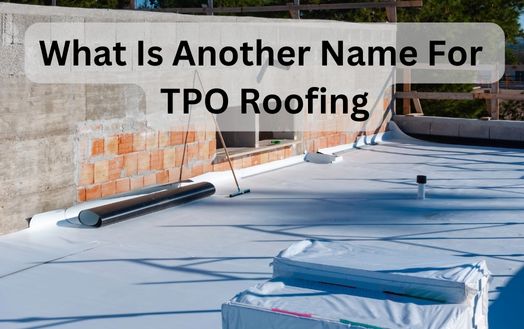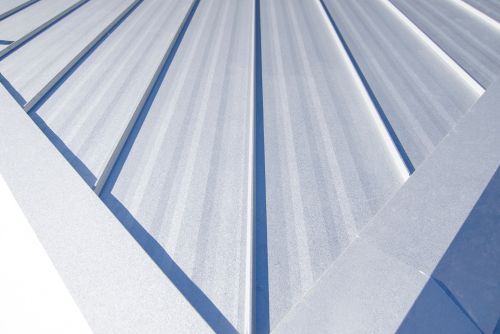
TPO roofing, which stands for thermoplastic polyolefin roofing, is a popular choice for commercial roofing due to its durability, energy efficiency, and cost-effectiveness. TPO roofing membrane is a type of roofing material that is commonly used on flat roofs. It is known for its flexibility, resistance to UV rays, and ability to withstand various weather conditions. In this blog post, we will explore the basics of TPO roofing, its advantages, potential drawbacks, installation process, cost analysis, repair strategies, and how it compares to other commercial roofing systems and what is another name for TPO roofing. Whether you are a property owner or a commercial roofing contractor NJ, understanding TPO roofing can help you make an informed decision when it comes to choosing the right roofing material for your commercial facilities.
TPO roofing, also known as thermoplastic polyolefin roofing, is a type of roofing membrane that is widely used in commercial roofing applications. It is made of a blend of polypropylene and ethylene-propylene diene monomer (EPDM), which gives it its unique properties. TPO roofing membrane is lightweight, flexible, and synthetic rubber-based, making it a popular choice for flat roofs. It offers excellent resistance to ozone, chemicals, and UV rays, making it a durable and long-lasting roofing material. TPO roofing membranes are typically available in white and light gray colors, which contribute to their energy efficiency by reflecting sunlight. The seams of TPO roofing are heat-welded or adhered using adhesives, creating a watertight seal and ensuring the integrity of the roofing system.
TPO roofing is often used on flat roofs, which are commonly found in commercial buildings. It is a versatile roofing material that provides reliable protection against the elements. TPO roofing membrane is made of a blend of polypropylene and ethylene-propylene diene monomer (EPDM), which gives it its strength and durability. TPO roofing membrane is reinforced with scrim, polyester, carbon fiber, or fiberglass, enhancing its resistance to tears and punctures. It is also available in various thicknesses, widths, and lengths, allowing for customization based on the requirements of the roofing project. TPO roofing membrane may contain fire retardant chemicals to enhance fire resistance, making it a safe and reliable choice for commercial roofing applications.
There are various manufacturers of TPO roofing material, each offering their own unique blend of thermoplastic polyolefin. These manufacturers produce TPO roofing membrane of different thicknesses, widths, and lengths, allowing for flexibility in selecting the right material for a roofing project. TPO roofing membrane is typically a blend of polypropylene and ethylene-propylene diene monomer (EPDM), which gives it its durability and resistance to ozone, chemicals, and UV rays. Some TPO roofing materials may also contain fire retardant chemicals, enhancing their fire resistance. The type of polymer used in TPO roofing membrane contributes to its functionality, longevity, and overall performance, making it a preferred choice for many commercial roofing applications.

When it comes to commercial roofing, TPO roofing offers several advantages that make it a popular choice. Its energy efficiency, fire resistance, and durability are just a few of the factors that make it an attractive option for commercial facilities. However, like any roofing material, TPO roofing also has its potential drawbacks that need to be considered. In this section, we will explore the pros and cons of TPO roofing, helping you make an informed decision about whether it is the right choice for your commercial roofing needs.
When considering TPO roofing, it’s essential to understand the benefits it offers. TPO roofing membranes exhibit remarkable resistance to chemicals, ozone, and UV rays, ensuring durability and longevity. Additionally, they contribute to environmental initiatives by being recyclable and promoting energy efficiency through insulation. Furthermore, ease of installation, low maintenance requirements, and high elasticity make TPO roofing systems a practical choice for both residential and commercial roofing needs. With TPO, you get a reliable, cost-effective solution that aligns with sustainability goals while providing excellent protection for your property.
When considering TPO roofing, it’s important to address potential drawbacks. Issues related to seams, membrane ply, and insulation can affect TPO roofing systems. Factors like UV exposure and foot traffic may impact its functionality, while existing roof conditions such as moisture, insulation, and deck type can also influence performance. Proper installation is crucial to prevent leaks, membrane shrinkage, and premature aging. Additionally, considering warranty, thickness, and material quality is essential for TPO roofing. It’s imperative to be aware of these factors when evaluating TPO as a roofing option.
The installation process of TPO roofing involves meticulous steps to ensure durability and performance. Starting with the preparation of the roof, it includes the installation of insulation boards such as XPS or EPS, followed by the application of a suitable adhesive. Then, the TPO material is installed and welded together using hot air. It’s crucial for commercial roofing contractors to follow manufacturer specifications to achieve optimal mil thickness. Careful detailing around roof penetrations and edges is essential for a watertight seal. Homeowners and professionals alike should also consider factors like talc and inches during installation for quality assurance.
During TPO roofing installation, several key factors must be carefully considered to ensure optimal performance. Proper insulation, cover board, and seam integrity are crucial for the system’s effectiveness. Attention to membrane width, thickness, and attachment is essential during the installation process. Evaluating existing roof conditions and deck type is part of the process. Contractors must strictly adhere to industry guidelines, manufacturer specifications, and warranty requirements. Additionally, factors such as weather conditions, roof slopes, and building codes play a vital role in TPO installation.
During TPO roofing installation, avoiding common mistakes is crucial. Issues like inadequate seam welding and insulation, as well as problems with membrane width, thickness, and adherence, can significantly impact the performance of TPO material. Proper handling of roofing material, seams, and cover board is essential to prevent installation errors. Commercial roofing contractors should prioritize avoiding shortcuts, ensuring proper membrane ply, and addressing fire resistance. Prevention of leaks, premature aging, and functionality issues through meticulous installation is key.

When determining the cost of TPO roofing, it’s essential to consider factors such as the material’s durability and energy efficiency. TPO material costs vary based on thickness, with thicker mils providing enhanced durability. Additionally, installation costs may differ for commercial and residential roofing, and homeowners should be mindful of potential maintenance expenses. To optimize cost efficiency, consulting with a commercial roofing contractor can provide valuable insights. Overall, the cost analysis of TPO roofing involves evaluating material expenses, installation costs, and long-term benefits in the commercial roofing industry.
The total cost of TPO roofing is influenced by several factors. Factors such as the size of the roof and installation complexity, the type and thickness of the TPO membrane, insulation materials used, and the manufacturer’s warranty all impact the overall cost. Additionally, the location of the building and local labor rates can also play a significant role in determining the cost of TPO roofing. It is essential to consider these factors when evaluating the investment in TPO roofing for commercial or residential properties.
In the commercial roofing industry, TPO material stands out as a cost-effective option compared to PVC roofing. Its durability and energy efficiency make it a better investment than EPDM roofing. Additionally, TPO roofing strikes a balance between affordability and performance, outperforming traditional built-up roofing systems. Compared to metal roofing, TPO is more budget-friendly without compromising durability. When compared to asphalt shingles, TPO roofing offers superior energy efficiency and longevity, justifying its upfront investment. Homeowners and commercial roofing contractors alike recognize the value of TPO roofing in both residential and commercial applications.
Repairing a TPO roof involves identifying damage, such as punctures or tears, and selecting the right repair strategies for ethylene propylene diene monomer (EPDM) roofing material. Understanding the installation process is crucial, as repairs may involve reseaming or using patches. It’s essential to avoid common mistakes and consult a commercial roofing contractor for professional assistance. Homeowners should be aware of the mil thickness and consider factors like XPS or EPS insulation, as well as talc in the membrane. Effective commercial roof repair NJ ensure the longevity of the TPO roof in the residential and commercial roofing industry.
When examining TPO roofs, it’s crucial to watch out for membrane cracks, tears, or punctures that may necessitate timely commercial roof replacement NJ. Abrasions caused by weathering, foot traffic, and debris can potentially lead to leaks, emphasizing the need for regular inspections. By assessing the integrity of insulation, cover board, and scrim, one can properly identify TPO roof damage. Moreover, monitoring membrane width, thickness, and elasticity is essential for identifying any signs of damage. These practices are imperative for maintaining the longevity and functionality of TPO roofing systems.
When it comes to effective repair strategies for TPO roofs, heat-welding techniques are often utilized to ensure seamless membrane integrity. Additionally, using compatible adhesives and sealants is crucial for successful TPO roof repair applications. Commercial leak repair NJ in TPO roofs require meticulous attention to detail, especially at seams and penetrations. Implementing durable and UV-resistant TPO membrane patches is essential for long-lasting repairs. It’s important to address not only visible damage but also underlying membrane functionality when carrying out TPO roofing repairs.

When considering commercial roofing systems, it’s essential to compare TPO roofing with other options in the market. The commercial roofing industry offers various materials like EPDM and PVC, but TPO material stands out due to its ethylene propylene diene monomer composition and energy-efficient qualities. Commercial roofing contractors often recommend TPO for its durability and flexibility in different climates. Homeowners and businesses appreciate TPO for its resistance to ozone, algae, and UV exposure, making it a reliable choice for both residential and commercial applications.
When comparing TPO and EPDM roofing, TPO typically offers better resistance to punctures and tears. Additionally, TPO is more energy-efficient and has superior UV resistance. The white color of TPO contributes to higher energy efficiency, exceeding the performance of EPDM. Furthermore, TPO installation is often more straightforward and cost-effective. Its scrim, thickness, and width make it a preferred choice in various commercial applications.
When comparing TPO and PVC roofing, it’s evident that TPO is more durable and energy-efficient. The white color of TPO contributes to superior energy efficiency, surpassing PVC options. Additionally, TPO’s membrane thickness, width, and UV resistance often outperform those of PVC. In terms of fire resistance, TPO is generally preferred for commercial facilities. Moreover, TPO’s advancements in technology and material composition make it a more versatile choice over PVC in both residential and commercial roofing applications.
Considering the energy efficiency, longevity, and fire resistance of TPO roofing, it is a suitable investment for commercial facilities prioritizing safety and cost-effectiveness. With low maintenance requirements and warranty options, TPO roofing is a versatile and worthwhile investment for various applications.
When choosing TPO roofing, it’s important to consider the square foot cost, durability, energy efficiency, warranty, fire resistance, insulation options, and functionality of seams and ply.
In conclusion, TPO roofing, also known as Thermoplastic Olefin roofing, is a popular choice for commercial buildings due to its durability, affordability, and energy efficiency. Its seam strength and resistance to UV rays make it a reliable option for long-term protection against the elements. However, like any roofing system, TPO has its pros and cons, and it’s important to consider factors such as climate, maintenance, and installation quality when making a decision. Whether you’re looking for a cost-effective solution or seeking a roofing system that offers superior performance, TPO roofing is worth considering. Always remember what is another name for TPO roofing just in case you consider getting one. Consult with a commercial roofing company NJ to determine if TPO roofing is the right investment for your specific needs.